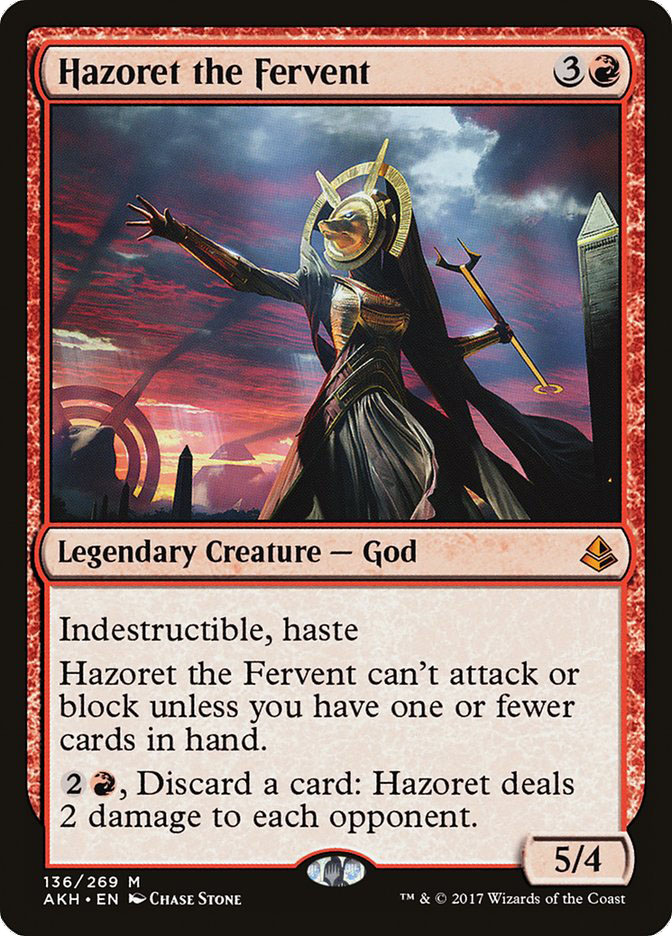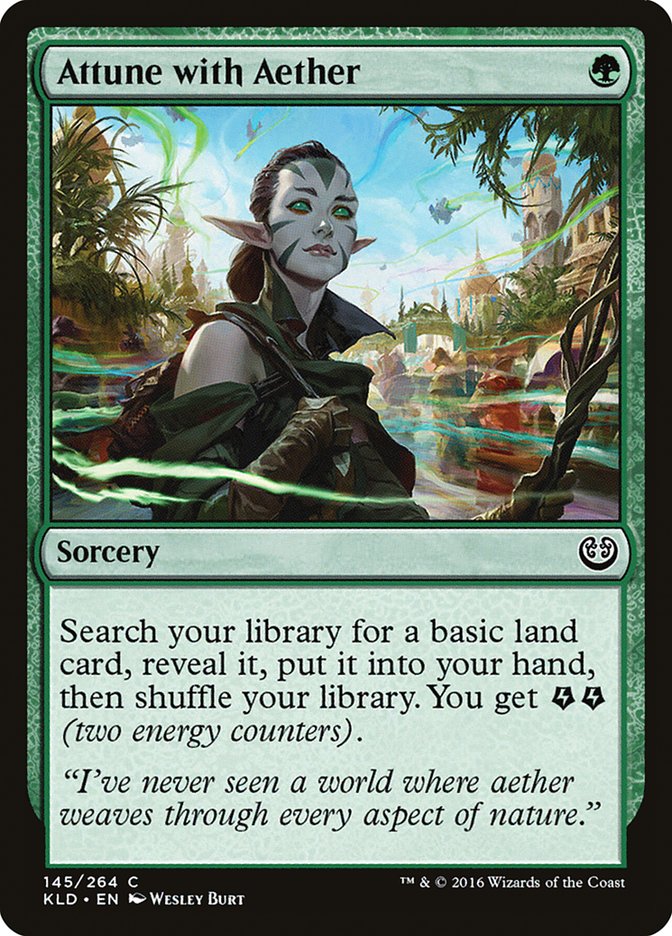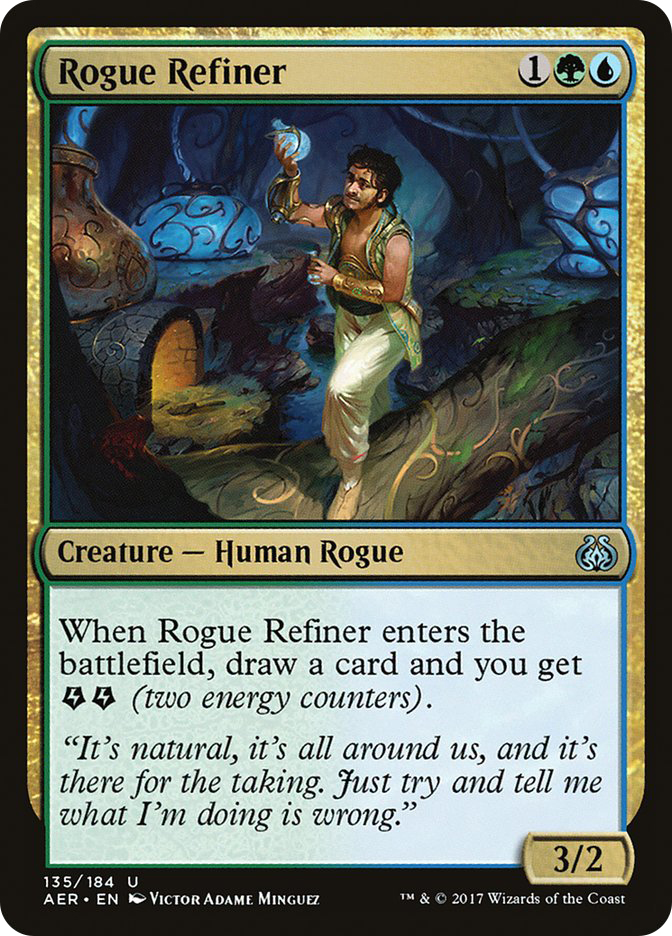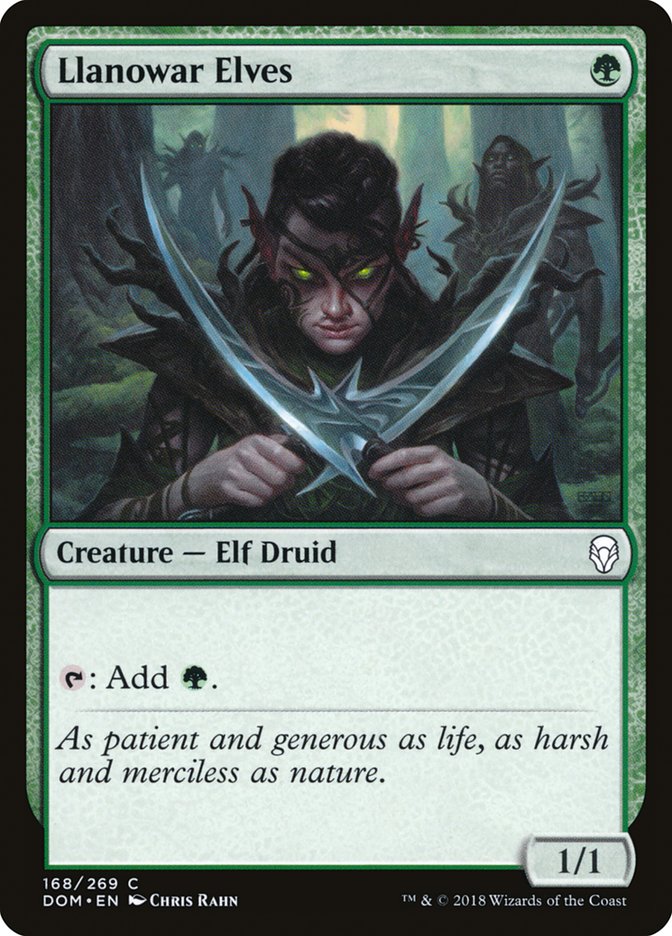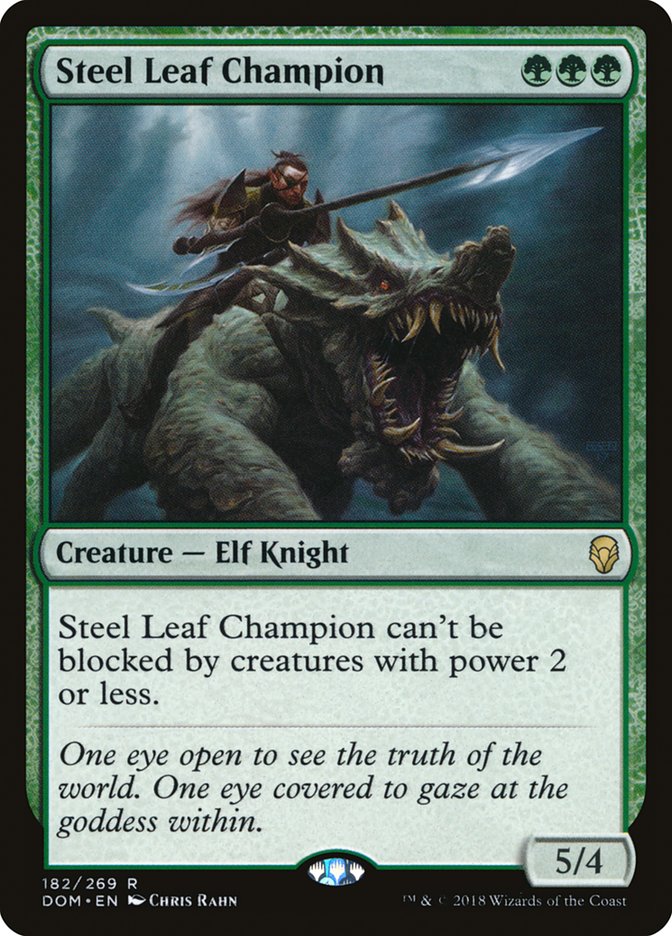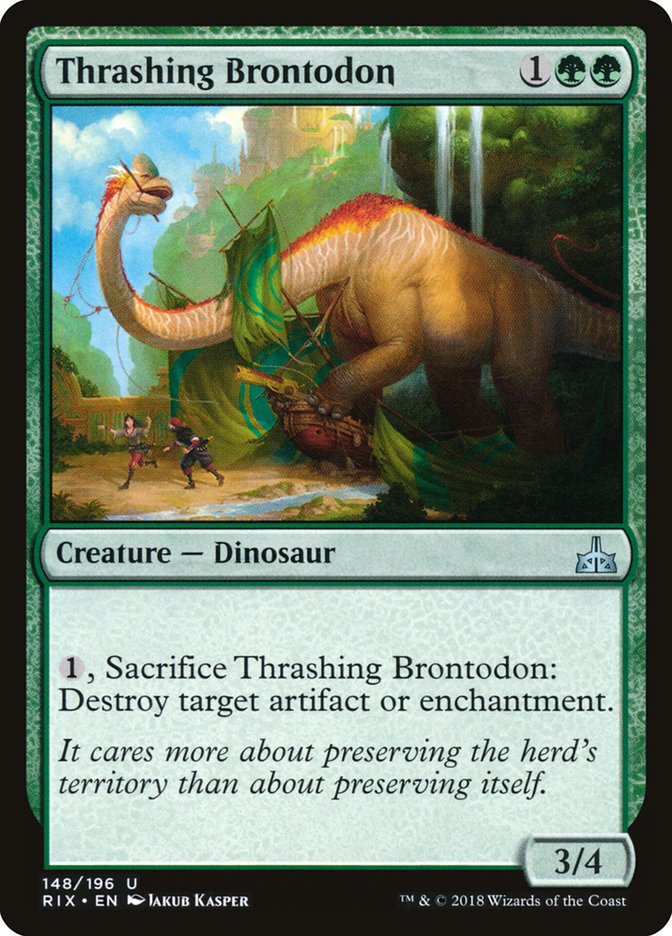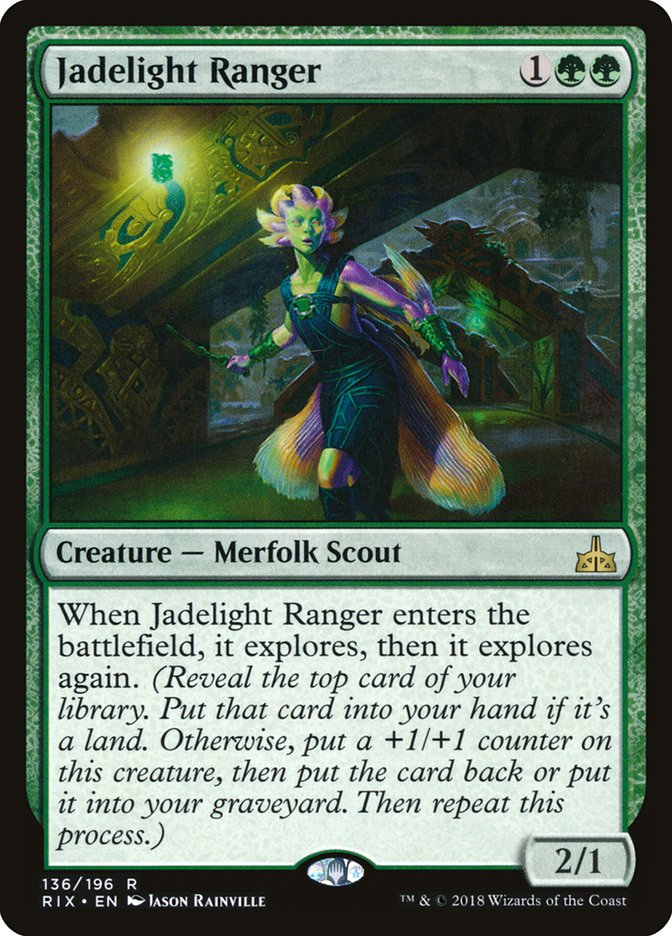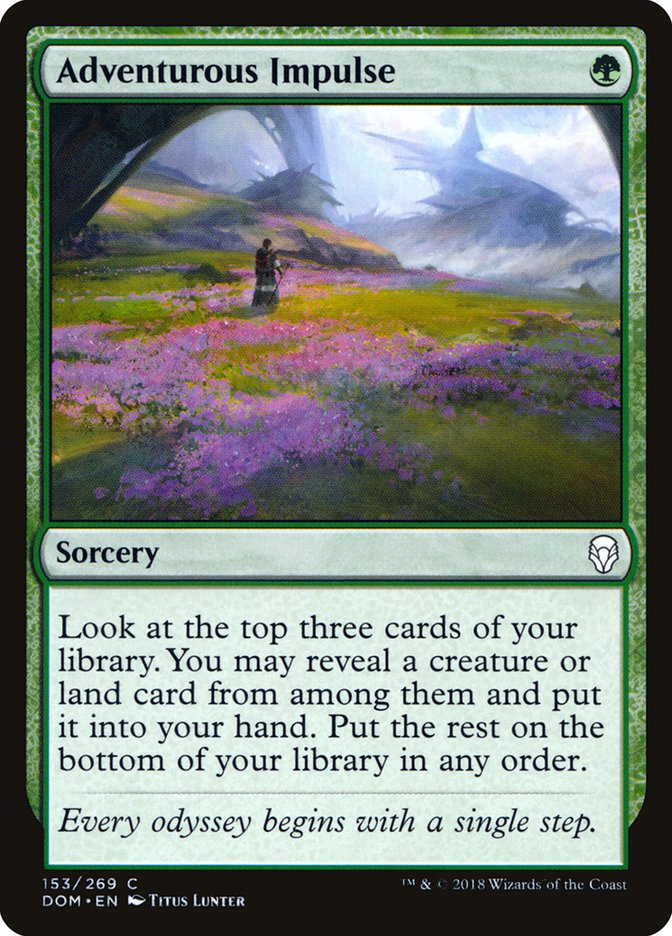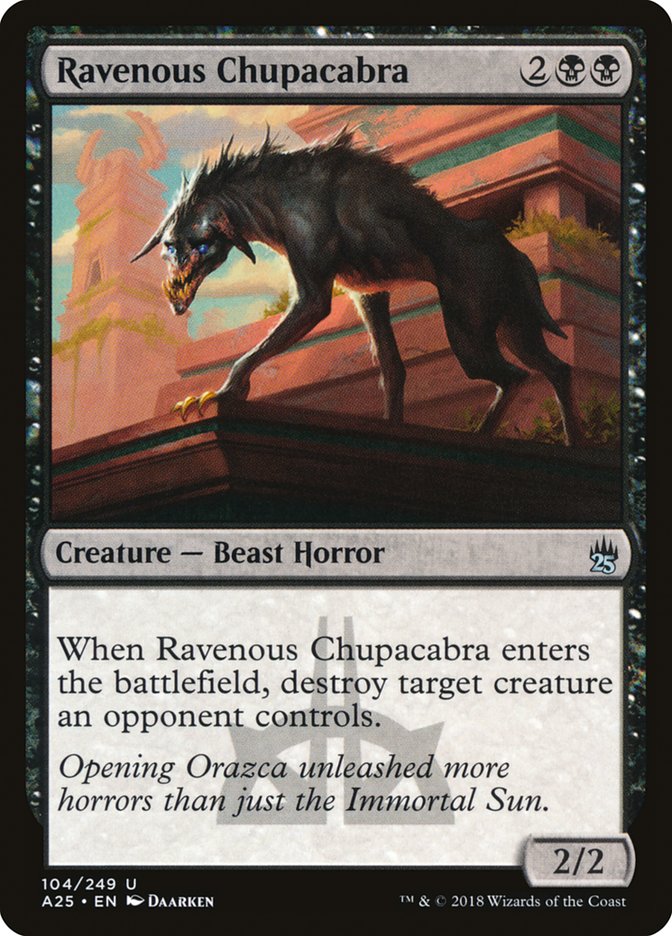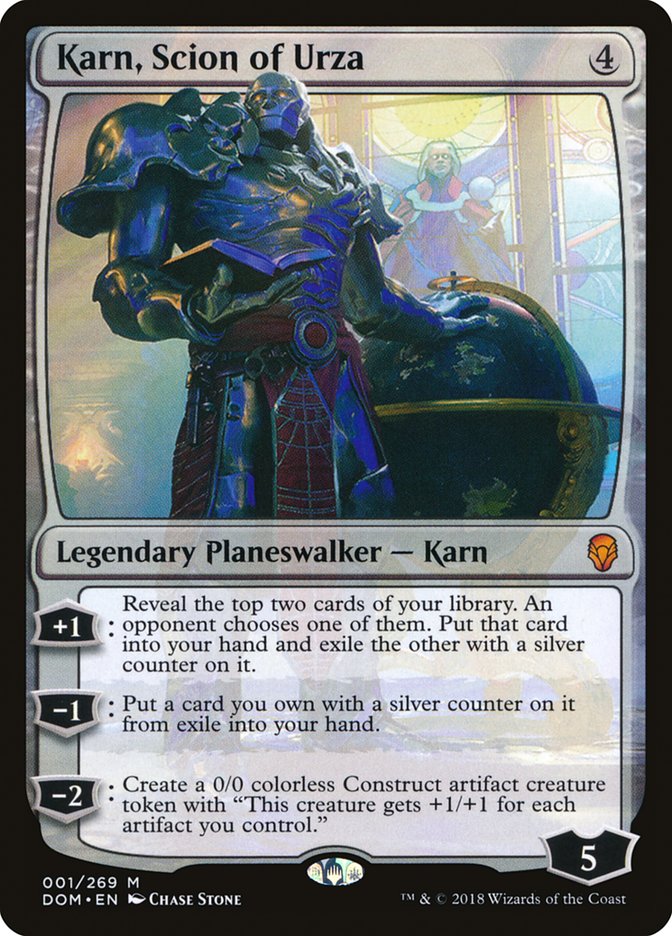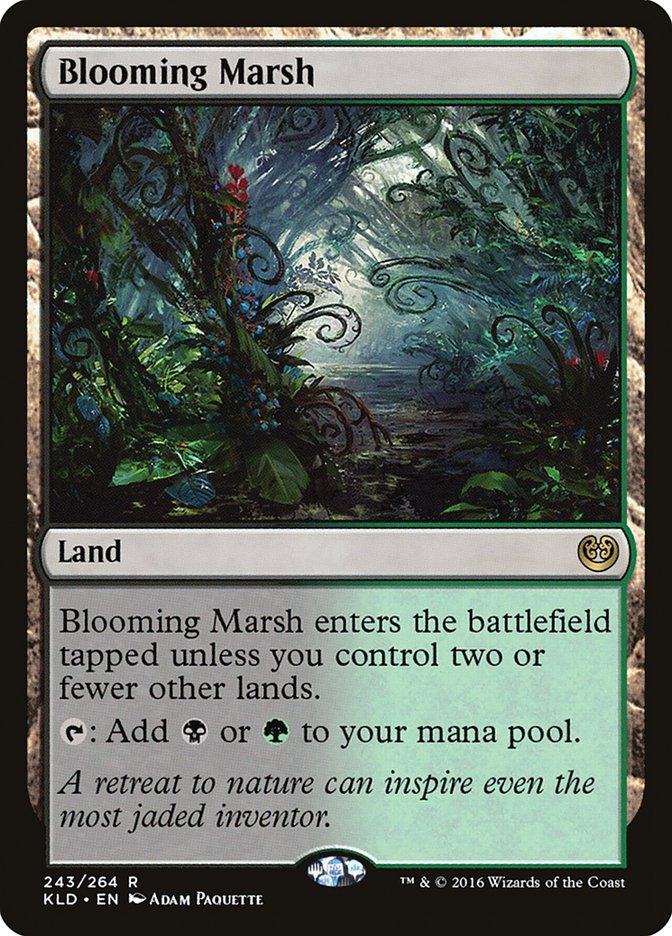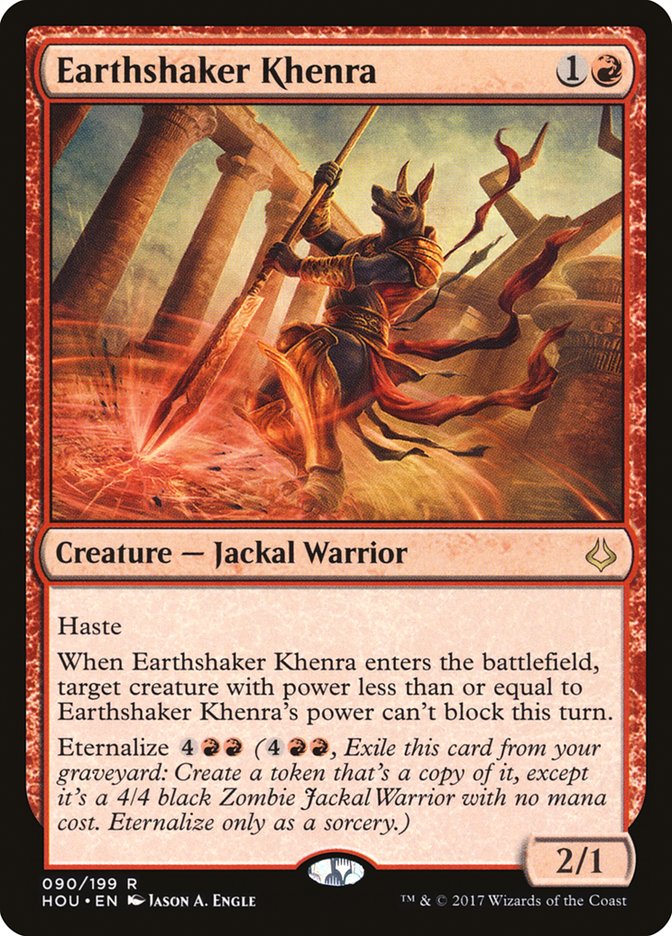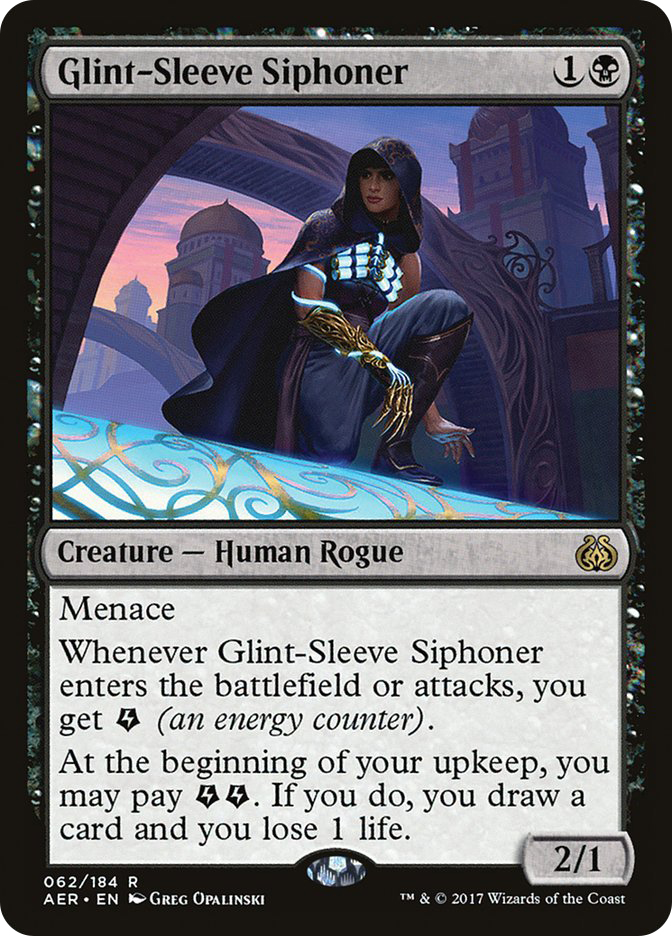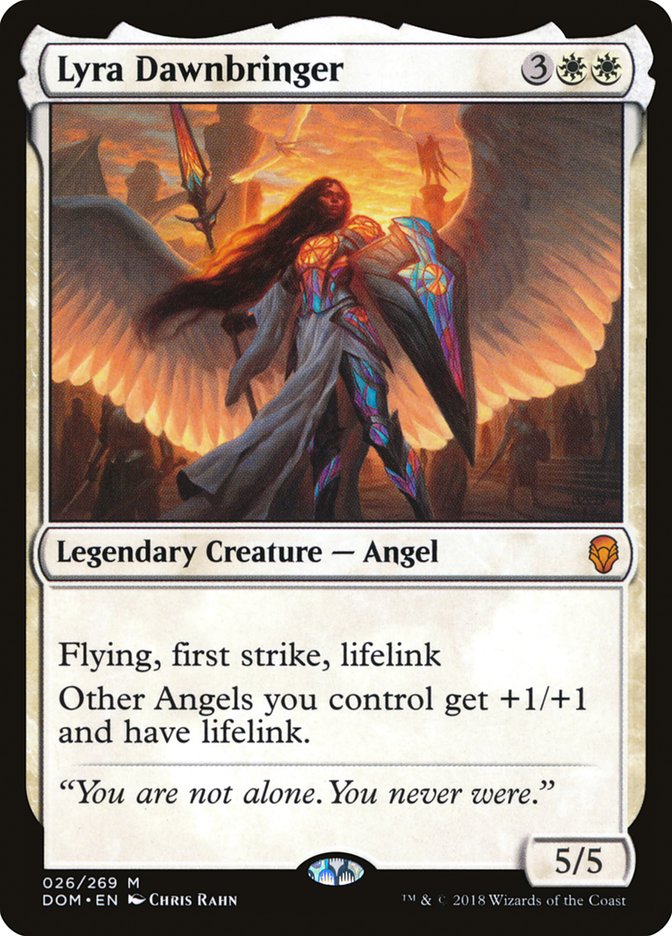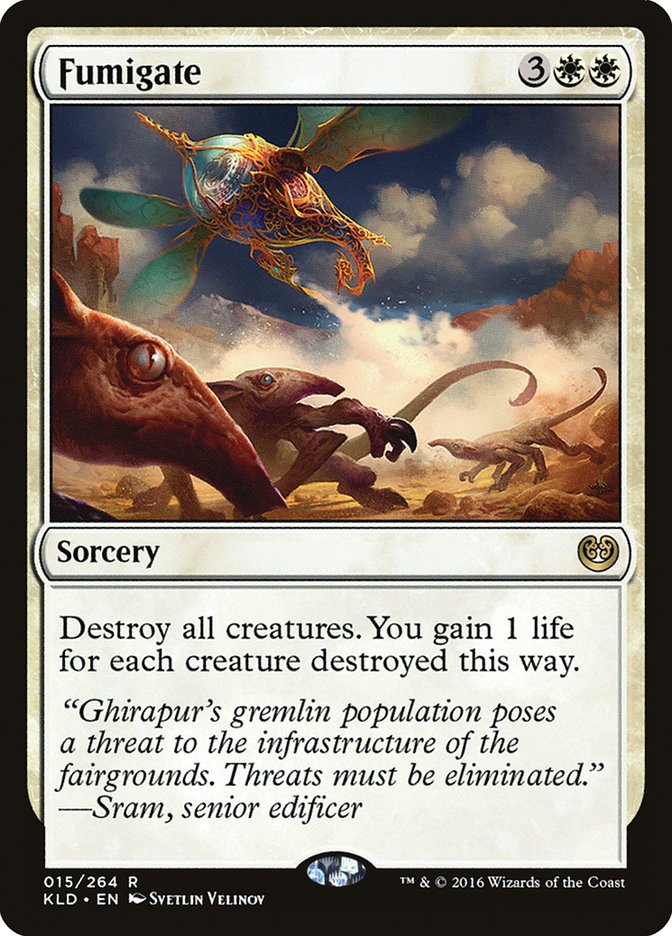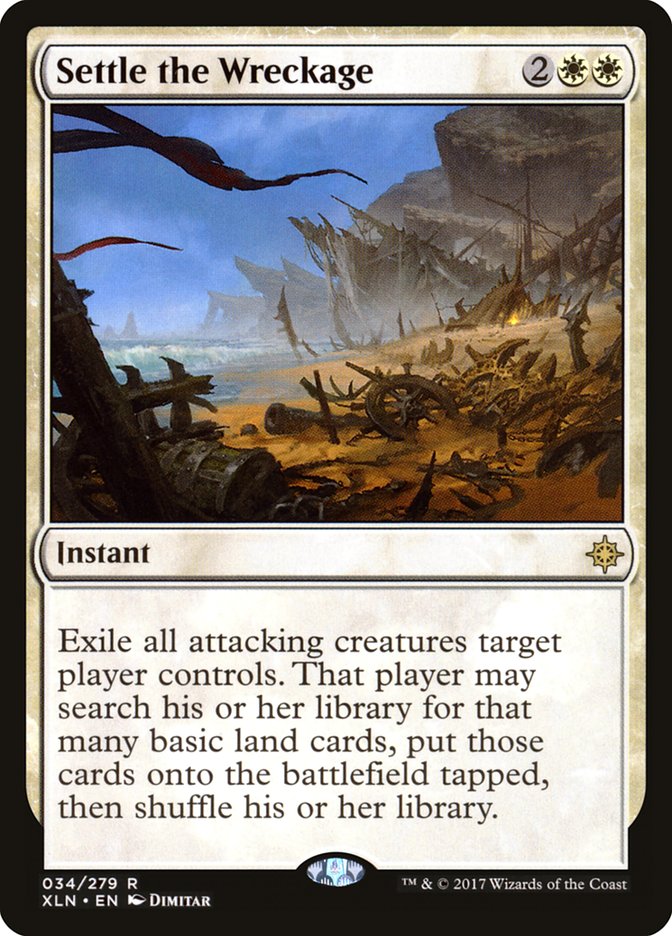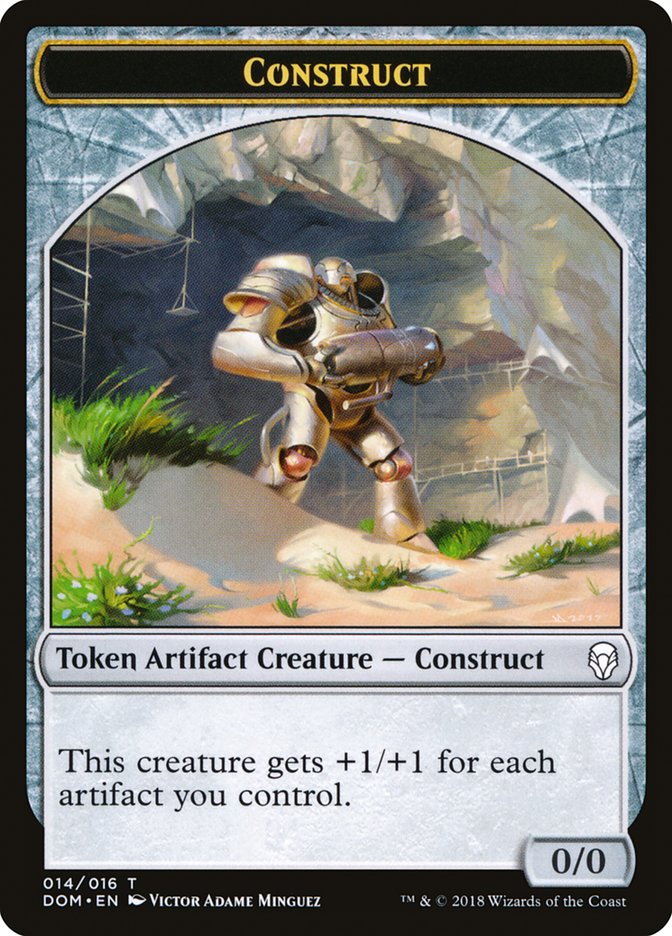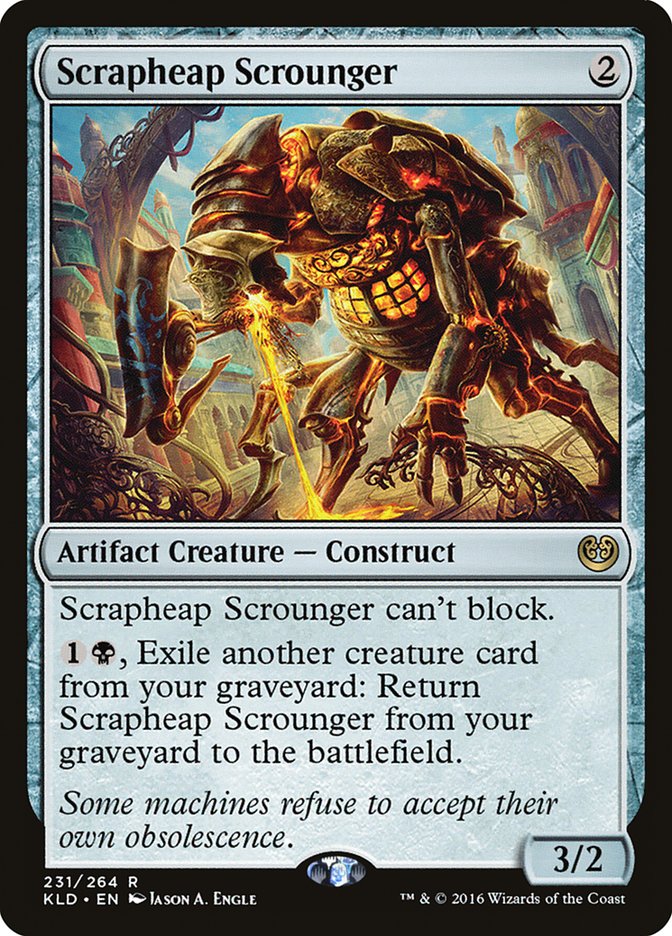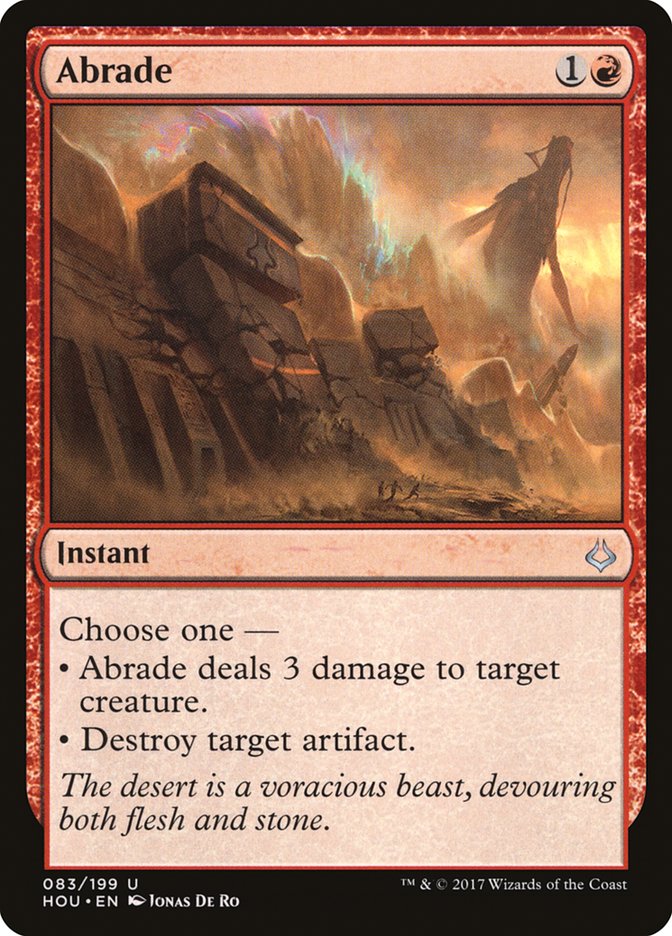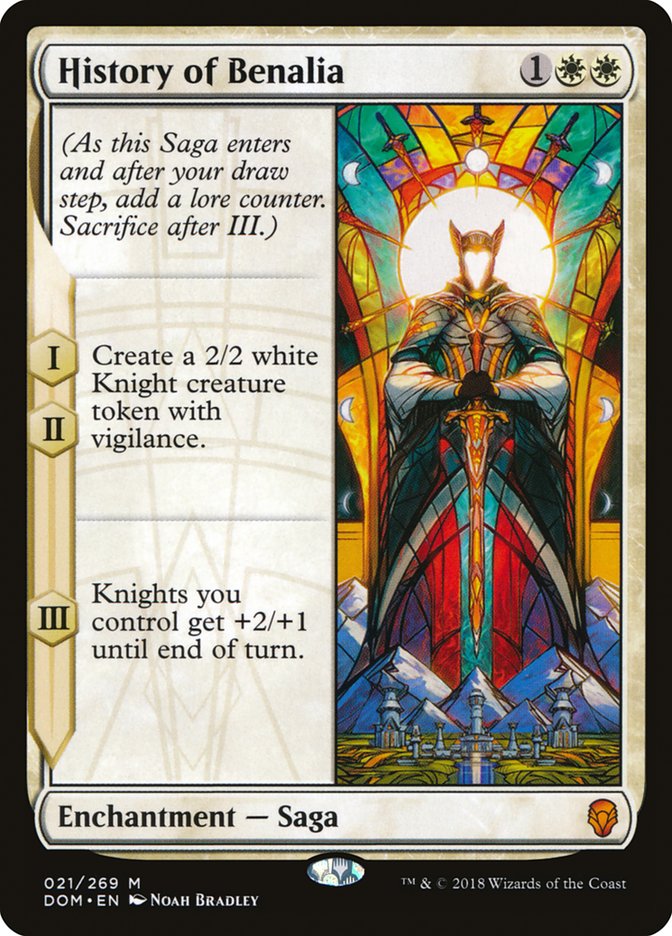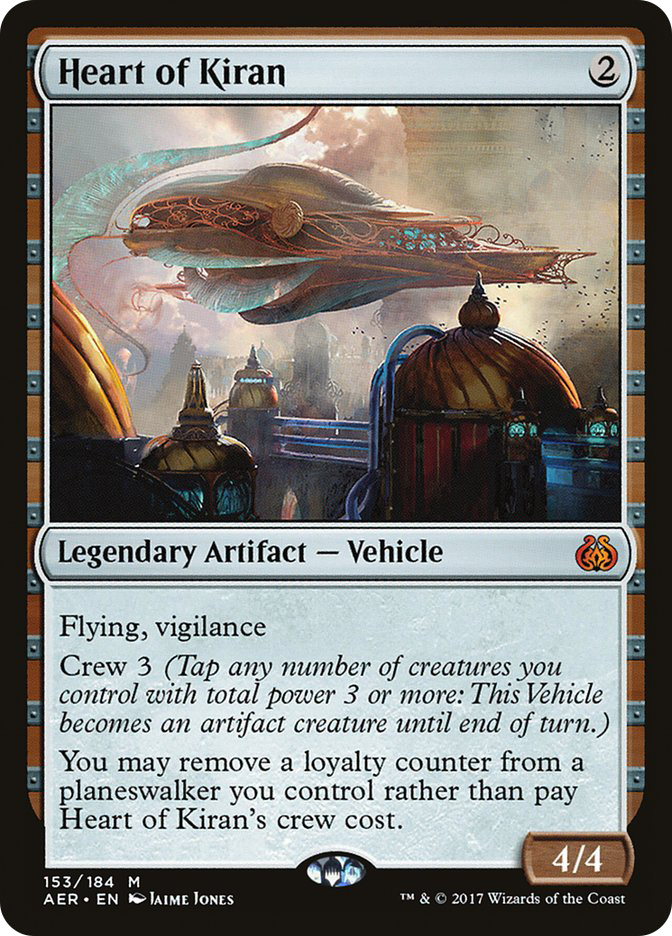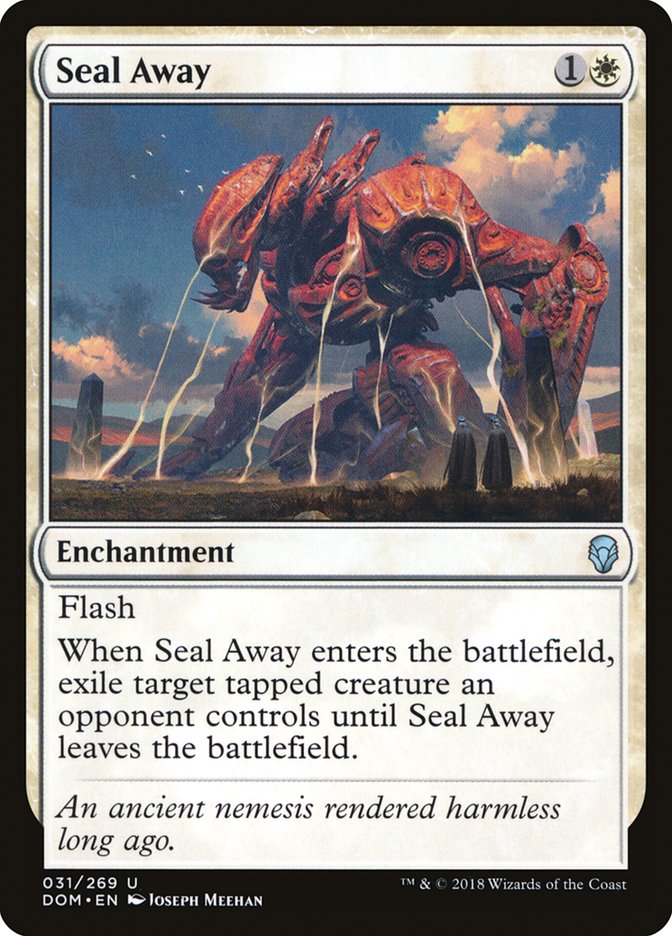So far, Dominaria Standard looks as promising as Rivals of Ixalan in terms of providing a dynamic and deep metagame. One of the biggest tricks and changes from Ixalan Standard is that the best cards don’t force you down narrow deckbuilding paths.
Well, what other 57 blue and black cards do you want?
Even the most restrictive winner with the condition of “fast red cards” ended up splitting into R/B Aggro, B/R Aggro (Dread Wanderer), Mardu Vehicles, normal Mono-Red Aggro, and then some U/R Gift lists.
Compare The Scarab God and Hazoret to these cards we don’t like to talk about anymore. Well, I guess you want to apply pressure, so there’s Longtusk Cub, which also says “energy” on it. Then I guess Bristling Hydra also says energy, and Whirler Virtuoso, and oops that’s just the first 40 cards of Temur Energy. Guess I’ll start at the top and… oh darn, it happened again.
Of course, even in a Standard with less parasitic interactions, there are still card packages that work out better. Call it more of a symbiotic relationship.
Here’s how that breaks down for a few of the most powerful but generic cards in the format.
Llanowar Elves
Let’s start with the most obviously good card from Dominaria. Llanowar Elves has made its presence known across several archetypes, but I wonder if people are just playing it because it’s a good green card.
The big thing with Llanowar Elves is you need to put three-drops in your deck you actually want to cast on Turn 2. The flip side of that is sometimes you don’t draw Llanowar Elves, so you need to be okay playing a game where your three-drop is cast on Turn 3.
With Steel Leaf Champion you are almost surely fine casting it later, but Rishkar, Peema Renegade isn’t great when it just pumps your Llanowar Elves and Jadelight Ranger is definitely too slow if the metagame shifts towards aggression. Finding nongreen alternatives here is one of the unexplored spaces of the format, and it doesn’t feel like G/W Midrange or G/B Constrictor is quite there yet.
Creatures (32)
- 4 Llanowar Elves
- 4 Angel of Invention
- 4 Servant of the Conduit
- 4 Minister of Inquiries
- 3 Trophy Mage
- 4 Walking Ballista
- 2 Vizier of Many Faces
- 4 Champion of Wits
- 3 Thrashing Brontodon
Lands (22)
Spells (6)

A quick Gatherer search showed a lot of nonsense like “Mono-White Vampires splashing Llanowar Elves” existed in the realm of single-color-costed three-drops, but I want to point out this deck and the Sultai alternative from Ben Friedman are probably just the best Llanowar Elves decks in the format. We see this in the red Gift decks with Skirk Prospector, which might just be a better version of the same card, but it’s good to know there are other ways to do things.
On the note of “other things,” there are other ways to spend three mana on Turn 2. The current builds of G/B Constrictor largely aim to cast a two =0drop and an Adventurous Impulse off Llanowar Elves, or else just curve Impulse into whatever great two-drop into their three-drop.
Llanowar Elves is pretty awkward with nongreen double-colored spells early on. You aren’t casting a Chandra, Torch of Defiance on Turn 3 with it. In these G/B Constrictor decks, you aren’t really casting Ravenous Chupacabra until Turn 4, but that’s fine, as you mainly want to kill Lyra Dawnbringer with it. And Shanna, Sisay’s Legacy has hexproof from it, which is still just turbo-baloney.
The one thing I do like about Llanowar Elves in the enemy-color decks is that it makes four-drops a little more palatable. Steven Dykman showed up this last weekend with a slightly bulkier version of G/B Constrictor featuring Karn, Scion of Urza and Vraska, Relic Seer that made full use of Llanowar Elves. This might just mean Hadana’s Climb is the place to be, as you can play a bunch of Botanical Sanctums and Blooming Marshes with a little less fear of a tapped fourth land.
Walking Ballista
Moving on, we have the most ubiquitous card in Standard. Almost half of the decks in Standard are playing some amount of Walking Ballista.
There isn’t really a prescribed reason to play Walking Ballista because it checks off so many important boxes. It’s removal and it’s a mana sink, but it’s also a zero-cost artifact that registers death triggers and works with +1/+1 counter nonsense from Kaladesh block.
So instead of telling you which of the one million reasons to play Walking Ballista might apply to your brew, let’s talk about the force the card exerts on the format.
If you get two-for-one’d by a Walking Ballista with two counters on it, you’re not going to have a good time. Llanowar Elves gets a pass because, by the time they have four mana to do this, you should have used it enough times to not care. Same thing with Bomat Courier. Earthshaker Khenra gets half a pass.
Glint-Sleeve Siphoner, though, is a bit of a liability even if the card is amazing. Jadelight Ranger is the same thing, as is Merfolk Branchwalker, though “amazing” might be a stretch for those two.
The other piece of the puzzle is that you can’t expect to stabilize at two life and ride it out with removal. You would think counterspells are enough, but there are many things you need to stop with them and only so many Dissolves and Essence Scatters in your deck. Even if you stick a Teferi, Hero of Dominaria or Azcanta, the Sunken Ruin at low life, there’s a window where Walking Ballista just closes.
It’s hard to skew your play too much because you still need to eke every advantage out of your control cards in this format, but this might point towards Invoke the Divine being an important sideboard bullet to give you a bit of margin.
White Sweepers
Creatures (16)
Planeswalkers (6)
Lands (24)
Spells (14)
Sideboard

Can’t anyone make up their mind about which of these sweepers to play? There must be a real reason for either one. In U/W Control it makes sense to play a ton of each of them because you’re all about killing everything, but what about the decks splitting their time between creatures and sweepers?
Fumigate is at its core the same “false parity” style of spell that dates back to Wrath of God in Alpha. In the absence of a Selfless Spirit-style mondo-combo, that parity is happening in chip shots. The W/B Aggro deck that was all over #SCGBALT has Scrapheap Scrounger and Vehicles to recover from its own Fumigate at almost no cost.
Really, the big service Fumigate offers is a hard wipe. No matter how far behind you are, as long as their threats are creatures, Fumigate returns it to parity. Again, this is a big point in favor of it in W/B Aggro. Against the various green decks like G/B Constrictor or even just G/W Legends, you’re going to end up in spots where your random Knight tokens and 3/2 first strikes aren’t going to cut it.
As long as your opponent is thinking when you have four untapped mana, they should be capable of not putting their entire battlefield into the red zone. Fumigate makes sure nothing sticks around and you can recover.
The other thing Fumigate promotes is having some big whammy follow-up. Again, W/B Aggro shines here with Lyra Dawnbringer. Mop up the battlefield, and then presumably their last couple of things aren’t as good as a Baneslayer Angel.
So why even play Settle the Wreckage?
It costs four. Four is less than five. Math is great.
But really, the reasons to play Settle the Wreckage are matchups where your creatures won’t be outclassed but your clock might be. Since Ixalan, Mardu Vehicles versus Mono-Red Aggro has been a pure racing matchup where the Vehicles deck has always found itself a bit behind.
Settle the Wreckage can be utilized in that matchup in the same ways it was as a Draft blowout. Everyone shoves creatures at each other, there aren’t profitable blocks, and if you leave up four mana on the last turn of the race, there isn’t anything they can do besides shove and hope you don’t have it.
So if you care about beating G/B Constrictor, Fumigate is the spell you want to lean on. If you’re trying to race Mono-Red Aggro, that’s Settle the Wreckage’s job.
To bring up the most popular card in the world again, one of the big reasons Walking Ballista has gained ground since Dominaria was released is that it effectively utilizes the lands fetched by Settle the Wreckage. Gerry Thompson on The GAM Podcast last week even recommended playing Fight with Fire as an answer to Lyra Dawnbringer that works in a similar fashion against Settle the Wreckage.
As the format progresses and both decks and gameplay improve against it, Settle the Wreckage will drop out of the metagame.
Karn, Scion of Urza
Another colorless winner. The Top 8 of the SCG Baltimore Standard Classic features fifteen copies of Karn, Scion of Urza.
“Chaining Construct tokens off multiple Karns gets super-lethal super-fast.”
I sure was right about that. The purpose of Karn, Scion of Urza is definitely not to +1, -1 and churn cards. That’s the slowest Divination I can think of, and taking turns off from having an immediate payoff on those cards is not good. The card selection off Chandra, Torch of Defiance’s +1 is better, and that’s saying a lot.
When you’re casting Karn, your plan is to use the -2 and then do it again. The card draw aspect is a backup plan for weird spots where you aren’t stable, but Karn is your best play and you’re fairly set on action for the following turns as well.
The thing I had wrong was how many artifacts you want in your deck.
Let’s go through an ideal curve of Karn into Karn, each making maximum tokens. On the turn after you cast Karn, your first token can attack as a minimum 3/3 plus your other artifacts. The next turn you have three attacking 4/4s, plus your other artifacts. Simply having one additional artifact pushes that to basically lethal, and two is overkill.
You don’t need to be a twenty-some artifact deck like I was trying with The Antiquities War. If you have three or so other artifacts when you Karn, why do you need Karn? Maybe you want a 3/3 to “protect” Karn, but really the biggest threat to any planeswalker in this format is a big flier like Heart of Kiran that Construct tokens can’t interact with.
There isn’t a specific type of deck I’m saying should play Karn. Just more of them. If in a couple of weeks we see Karn showing up in the same number of decks as Walking Ballista is now, I wouldn’t be surprised.
Scrapheap Scrounger
While Hazoret the Fervent definitely is the biggest loser of the Seal Away metagame, Scrapheap Scrounger is only a bit behind. A two-mana colorless 3/2 is still a good enough rate that it sees play, but the recursion ability is at an all-time low.
We’re seeing Scrapheap Scrounger splashed in the Mono-Green Aggro deck off Blooming Marsh. Maybe that deck just wanted more two-drops to crew Heart of Kiran, but I’m pretty sure that’s not the optimal place for Scrapheap Scrounger.
I’ve been the happiest with Scrapheap Scrounger in decks that can mitigate Seal Away or Settle the Wreckage. Against control decks, that usually means getting to upgrade one of your removal spells into a 3/2 in your graveyard that just comes back in the most mediocre Aristocrats impression possible.
Just be aware that there are a lot of forces pushing you towards noncreature “creatures” as threats. In the W/B Aggro lists that were doing well this weekend, you only have twelve non-Scrounger bodies to exile, and even if your Scrounger doesn’t end up under a Seal Away, often some of those will. You will often find yourself with multiple Scrapheap Scroungers having to exile each other to come back.
That isn’t a bad thing, but you can’t really hold out for a better option when those literally don’t exist in your deck. This also makes cards like Bomat Courier and Walking Ballista a little more important because you can ensure they hit the bin for later reuse. Make that the million-and-first thing Walking Ballista does.
History of Benalia
It’s funny how we went from a format where Hazoret the Fervent, Rekindling Phoenix, and Vraska’s Contempt led the field to one where I can barely label a nongreen, nonwhite card as “ubiquitous,” but here we are.
History of Benalia is not a reason to play a bunch of crappy Knights. It also isn’t that insane, merely good.
— Ari Lax (@armlx) April 29, 2018
Honestly, History of Benalia might be one of the most overplayed cards right now. I wrote this tweet about Limited, but the same applies to Constructed. It’s a fine card and a reasonable rate, but at the end of the day it’s a slow way to make two 2/2s.
If you’re playing History of Benalia, you need it to do one of a few things. Importantly, all these things fall into the category of providing two physical bodies for one card.
If your deck just needs more threats that dodge Seal Away, History of Benalia is a pretty great way to do it. Unlike Heart of Kiran, you don’t need a specific enabler, just slam your Knight tokens and go. The split bodies on the vigilant Knights also come in handy against Teferi, Hero of Dominaria and Settle the Wreckage, so bonus value.
The thing you can do with creatures other than attacking is blocking. I know. It’s really high-level stuff. History of Benalia is a pretty good way to make bodies that gum up the ground for a planeswalker. A double block threatens most of the ground creatures in the format, and the slower pacing doesn’t matter much if you’re just using the Knights to ensure your Karn, Scion of Urza or Teferi, Hero of Dominaria sticks around.
Creatures (6)
Planeswalkers (6)
Lands (26)
Spells (22)

The third hidden mode is when you need it to both attack and block. Again, shocking high-level analysis. Take a look at Tall413’s deck that was featured in Gerry’s Ten Things article last week. You have planeswalkers in your midrange deck to protect, but you’re also a weirdo black midrange/control deck that should have no way to beat a traditional blue control deck, let alone anything featuring Teferi, Hero of Dominaria. You need to lean heavily on tools like History of Benalia to apply pressure while still keeping a pre-sideboard deck together that functions against aggro.
Don’t just play History of Benalia because it’s a good rate. That’s only technically true. Play History of Benalia because the two Knight tokens mean something.
The Rest
There are a ton of other cards I could have covered, but I aimed for staying value here. These are all cards that are efficient, multi-functional, or inherently card advantage. Lyra Dawnbringer is great, but it’s a five mana 5/5 that dies to removal. Abrade doesn’t kill everything, even if it kills a lot of things.
Oddly, these cards might be more important to the format than the top tier. See, if everyone is showing up with their playsets of the best card, games will come down to how they position everything else in their deck. The Scarab God mirrors were defined by showing up with the Essence Scatters on top of the obvious Vraska’s Contempts. This last weekend’s equivalent was showing up with Knight of Malice for Seal Away. I’m not sure what the next level is just yet, but I’m sure trying to find out fast.



